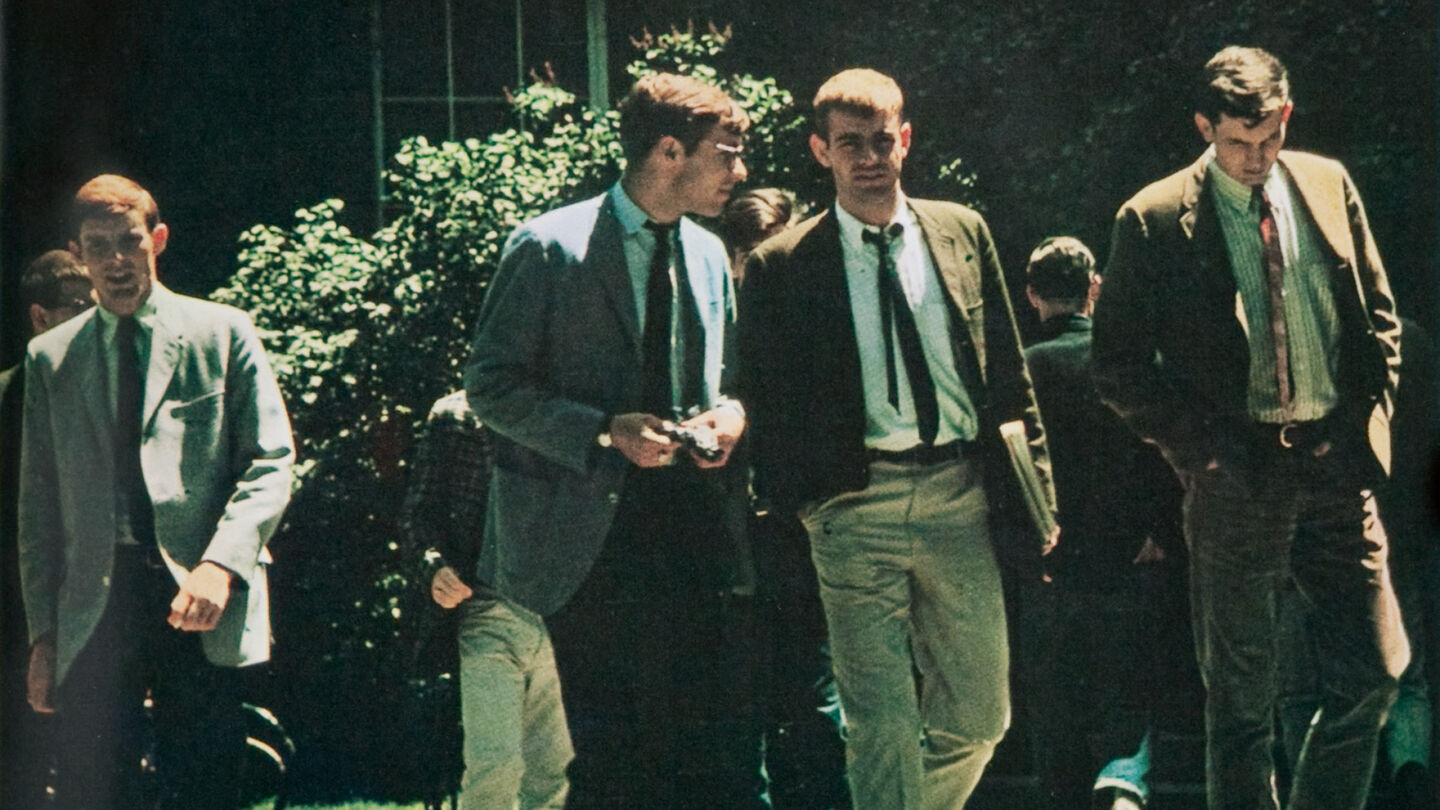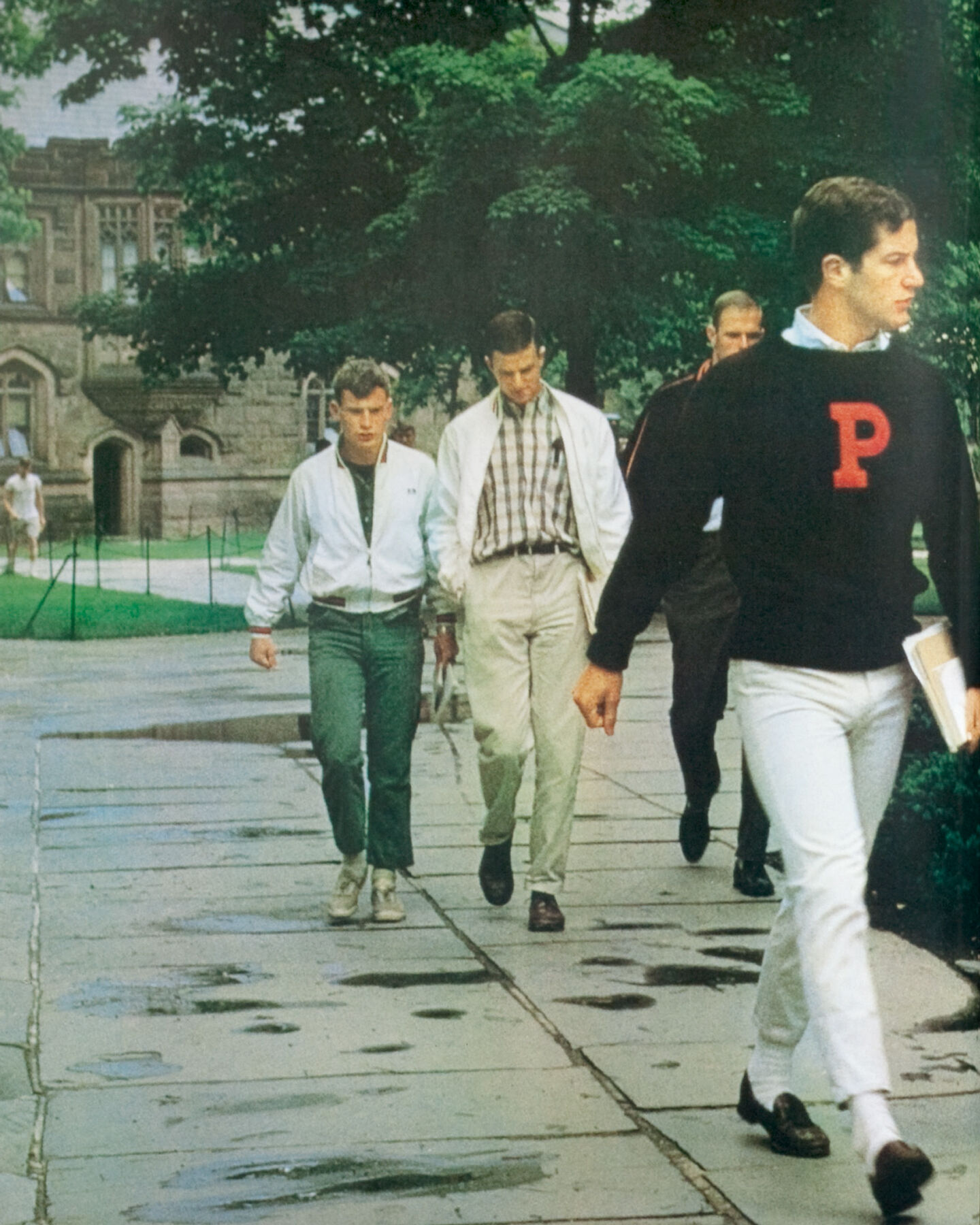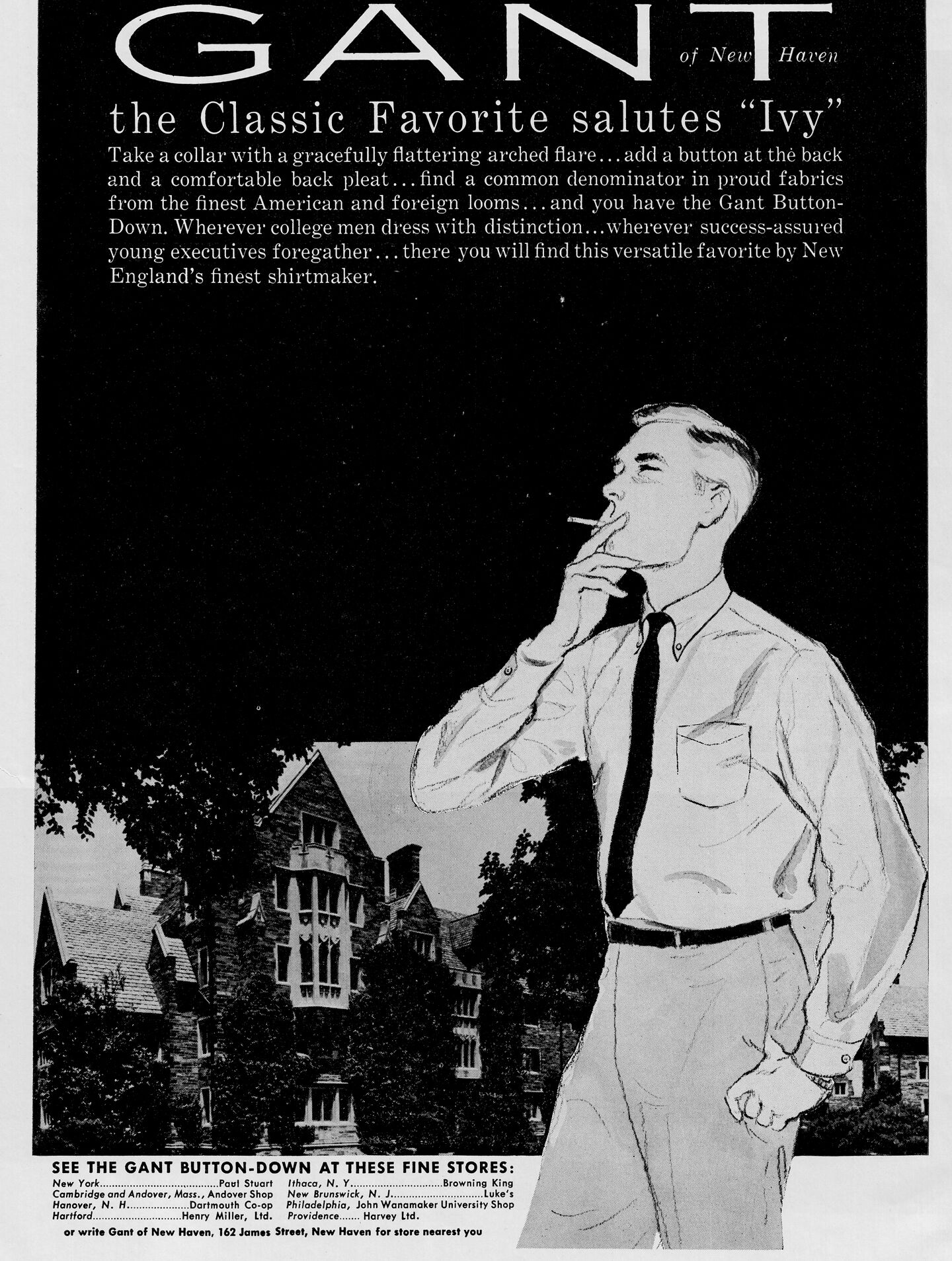
The collegiate look
The 1950s were a time of unprecedented growth in the United States, and GANT shirts only helped to define the smart-casual look that dominated the post-war years. GANT’s meticulous craftsmanship and easygoing American style appealed strongly to this new generation of men who had spent hard years wearing military-issued clothing, and were now returning home to take their place in the booming middle class. Not only did these men appreciate the perfect roll of a GANT collar, and the discrete yet iconic ‘G’ found on the shirttail, but also the quality of fabric that they came to expect from a GANT shirt. Soon, they would recognize yet another characteristic that GANT was to pioneer: color.

Influenced by the city of New Haven, Connecticut, and nearby Yale University, GANT played a major role in shaping what became known as the collegiate, “Ivy League” look. First used in the 1930s to refer to a group of northeastern American colleges that were sporting rivals, the term later became synonymous with more than just sports - it denoted academic excellence, prestige, tradition and a new, relaxed style that would forever change American fashion.

For the students, the Yale Co-op store was more than just the place to stock up on toothbrushes and textbooks. The on-campus store was also where they went to buy clothing, and as the “Ivy League” look exploded, the Yale Co-op was the nexus of the new style. Founded in 1885, the store was the second-oldest university store in the United States after the Harvard COOP. It supplied generations of students with the clothes that would become collegiate essentials: natural-shoulder suits, regimental ties, V-necked sweaters, sport jackets, khakis, wing-tipped shoes and loafers – all the garments required to look cool on campus.
This new look was a way of dressing well without necessarily dressing up. It featured such items as white buckskin shoes, gray flannel slacks, button-down shirts, and jackets with a natural shoulder. It was a more casual look, presenting a sharp contrast to the double-breasted, padded-shoulder suits that dominated in the pre-war years.

Marty and Elliot Gant were instinctively aware of what was happening in their hometown. They saw the emerging style and recognized that it dovetailed with what GANT was trying to achieve. They started experimenting with shirts in different fabrics and styles, and began adding bolder colors to the pale 1950s palette. The Gant family took immense pride in helping to shape this bright new look, and in 1954 the company changed its name to GANT of New Haven.
GANT’s line of shirts for the Yale Co-op was an immediate sensation. As the button-downs flew off the campus shelves and across the country, the GANT shirt became the essential garment for the stylish American man of the 1950s and 1960s.
